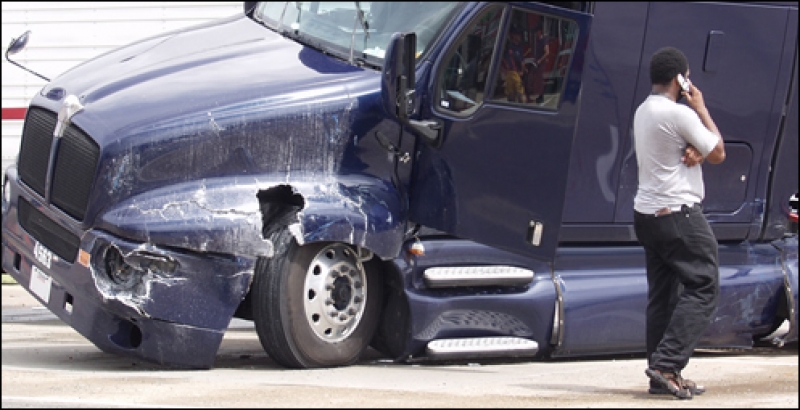1. Remain calm. Before you do anything, take a deep breath. There's a high probability your'e the only person on this scene who's a professional. The people on the scene expect you to do things right, the courts expect you to do things right. Your job didn't end when you had this crash. You are still on duty, you are still representing the company. Don't admit fault to anyone — even a simple "I'm sorry" could be construed by a court as an admittance of guilt.
2. Stop. Do not move the unit from the crash site unless told to do so by police or signs posted on the highway instruct you to do so. If stopping to give aid to a crash you are not involved in, do not park the truck in front of the crash to protect the people involved in the crash. While a driver's heart may be in the right spot in doing this, if another vehicle then hits your vehicle, the driver is at fault — unless a police officer has directed him to position his truck in that manner. If at all possible, get beyond the scene of the accident, on the less-traveled part of the road.
3. Secure the scene. Failure to secure the scene properly can result in major liability issues. Put reflectors out as soon as you can. There's a big misconception, Jerrell said, that you have 10 minutes to do that. That's not what the rules say, he said. The rules say that if you're going to be stopped for more than 10 minutes you have to put reflectors out right away. One reflectors goes 10 feet behind the vehicle, a second one 100 feet behind. How can you tell how long is 100 feet? Figure one pace equals 3 feet. The third reflector goes 100 feet in front (if it's not a divided highway) or 100 feet behind the second reflector.
4. Get help. In most cases, that will mean calling 911 with your cell phone. However, if for some reason that doesn't work, Jerrell said, send many people for help in many directions. If you just send one person, once they get away from the scene they may decide someone else will make the call and just go on their way.
What about giving first aid to the injured? This topic triggered a discussion with the audience about whether giving drivers first aid training could help or harm a company in a lawsuit. Yes, there's always a risk, he said, but a prosecuting attorney also could make the case that training drivers in first aid would be a reasonable thing for companies to do, and that not doing so could put you at fault.
If you do decide your drivers should offer such aid, make sure they have the training and the supplies needed, including training about blood pathogens and a first aid kit with gloves. Sometimes the best thing you can do is cover someone with a blanket to help combat shock and stay with them until help arrives.
5. Get witness information. Don't get aggressive or harassing about it, but do get the name, address, phone number, and license plate number of any witnesses. Keep in mind that your behavior will help determine whether their testimony is favorable to you or not. If you can't, at least snap a picture of their license plate. And don't spend too much time with a witness, as that could be seen in court as an attempt to coerce them and coach them on what to say on your behalf.
6. Notify your company. When a driver calls in, the natural human tendency is to try to defend himself. Encourage drivers to give a neutral report. In fact, ask them to lean the other way and imagine if they were the other party, what negative things they might have to say about the accident.
On the other end, make sure that when a driver calls in, the person taking that call is trained and prepared. Any message they send, anything they say, any notes they write can be used in court. If a driver calls, do they know the information the company needs? Do they have a form to fill out?
7. Take photos, take photos, take photos. These days, most drivers have cell phones that can take pictures. Train them how to use the time-stamp feature. This is another good activity for orientation — show them how, then have them take a picture with a time stamp and send it to you. That's the best thing that can happen, if drivers send photos directly from the scene.
Drivers should take photos from all sides of the vehicle — their own and any others involved. Get close-ups of any damage or other details, but make sure to include something in the photo to indicate relative size of what you're trying to document. Also, take a panoramic photo of the scene. This could identify details or even witnesses you aren't aware of at the time. Take photos even if it's a minor incident and the other party agrees there is no damage.
These steps should be taught in orientation, practiced, and reviewed on an ongoing basis. Laminated cheat-sheets outlining the steps that are kept in the cab can help drivers remember the steps in the confusion of an actual crash aftermath.







